When people forced to flee their homes arrive at a camp or an informal center, they are creating a new type of community—of people from different places and backgrounds, with different stories of displacement. Some may be there for a short period of time, others for longer. Community mobilization and engagement efforts help people find common ground and a voice in their new home.
“Engaging vulnerable groups in the planning process produces more positive outcomes and change than a plan prepared in isolation,” said Nadeen Khost, Project Manager for Blumont’s work at the Za’atari refuge camp in Jordan. “Participation improves camp management and raises standards of protection and assistance, while on the other side, also reinforcing a sense of dignity, reducing vulnerability, and helping build local capacity while strengthening coping strategies.”
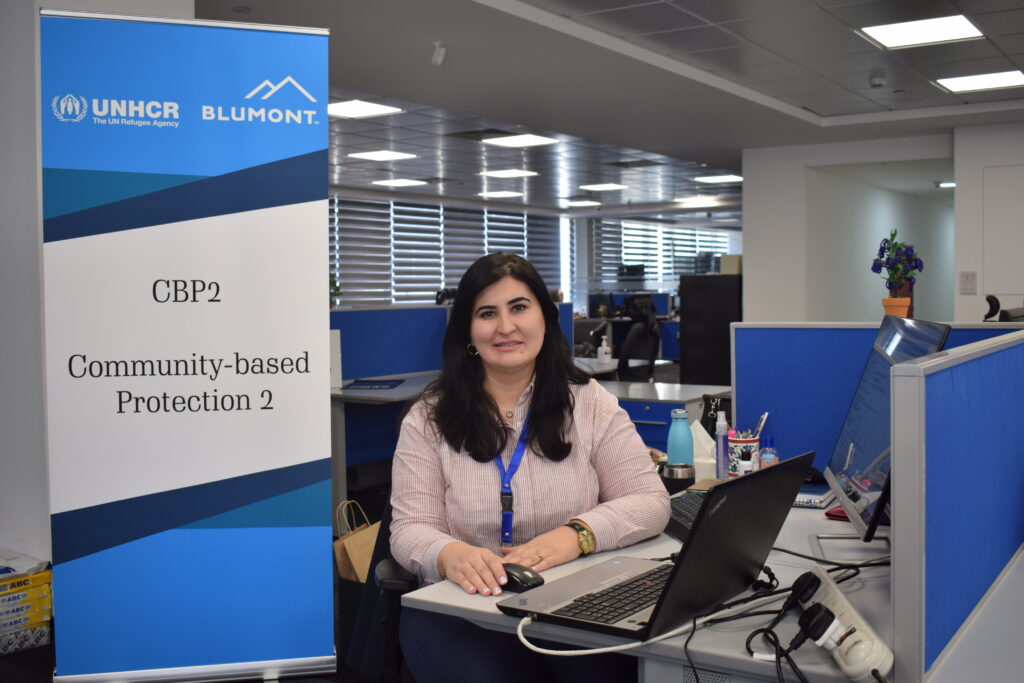
“Activities contribute to building strong linkages and trust with the community members as well as strengthened the communication channels with vulnerable beneficiaries,” said Nadeen Khost.
Engagement focuses on creating the space for people to participate and help shape their community. As with protection work, community engagement activities are centered on the members of the community and their unique needs.
Blumont has established multiple mechanisms to encourage community engagement at Za’atari, which is home to an estimated 76,000 refugees, including:
- Announcements and information about upcoming activities or opportunities are amplified in community centers around the camp and reiterated by the camp’s Community Mobilization Team when they are out working with residents.
- Active Task Forces and Working Groups representing different populations or focus areas—including youth, livelihoods, education, and more—help to plan activities and initiatives.
- Regular community gatherings are held as an open forum in which residents can raise ideas or concerns with staff, who in turn share those ideas back to other partner organizations working in the camp to take action, which is then reported back—creating a feedback loop. For example, a concern that a road needs to be fixed or a concern about flooding from rains would be shared to inform action.
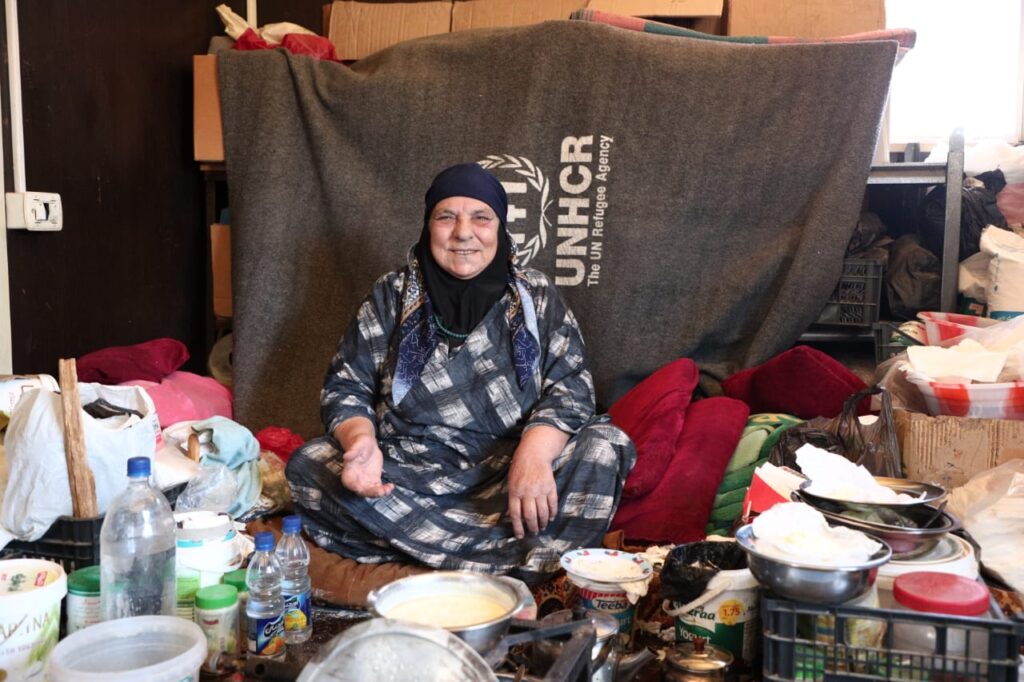
Visiting elderly residents for a meal at Za’atari Camp helps them to feel engaged in the community.
Nadeen noted that this engagement has multiple benefits. “Participation, especially in camp settings, gives the people opportunities to make choices, solve problems and restore some sense of normality and dignity which leads to increasing their self-esteem and help overcome trauma,” she said.
In Yemen, community engagement efforts focus on four community centers, working with refugees in urban areas, not in a camp setting. The refugee community in Yemen is very diverse, with people coming from many countries and speaking a number of languages.
“Refugee community centers are essential spaces and serve as an important community-based protection tool,” said Ashwaq Anbar, Blumont’s Yemen Representative. “These community centers are safe places where women, men, boys, and girls of diverse backgrounds can meet for social events, non-formal education, information exchange, space for youth activities, and other purposes.”
The four community centers—one for Somali refugees; one for non-Somali refugees and asylum seekers; a Community-Based Education Center; and a Psychosocial Support Center—each play a role in bringing people together. Members of the community take on a leadership role in managing the centers.
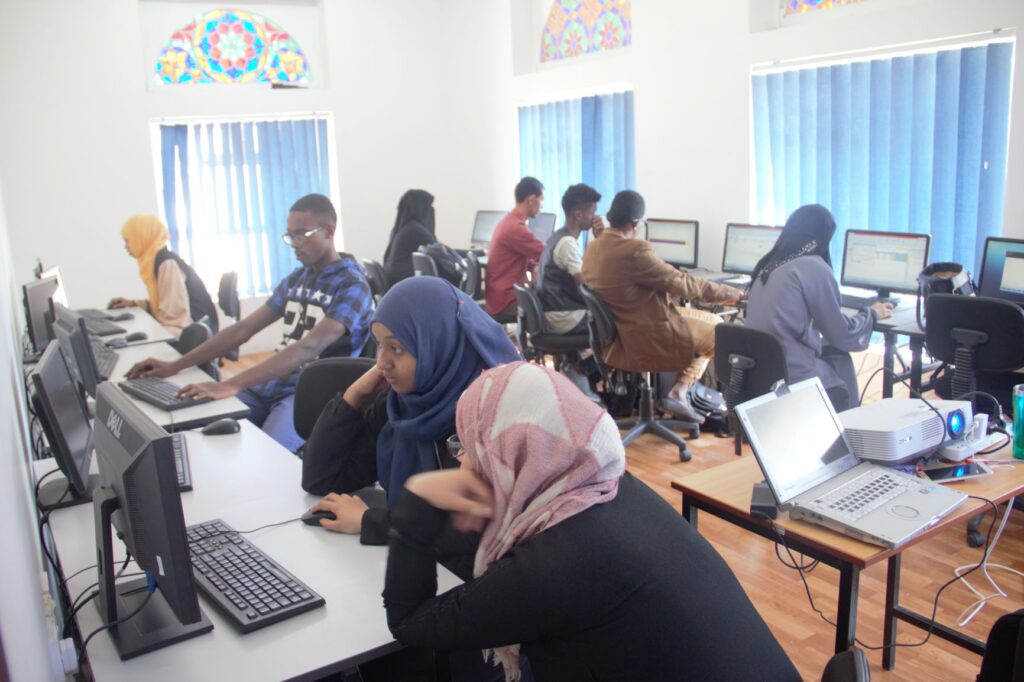
Computer courses at a community center in Yemen help build skills and connections. (Photo taken pre-COVID-19)
“This is a powerful tool to promote peaceful coexistence and ensure that all community members of different ages, gender, countries of origin, asylum status, and diverse backgrounds benefit from the centers’ programs and activities,” Ashwaq said. “Activities conducted at the community centers include computer training, Arabic and English classes, awareness-raising sessions, cultural events, and youth-empowerment activities. These activities provide opportunities for the refugee communities to support one another, share their skills, and address problems collaboratively.”
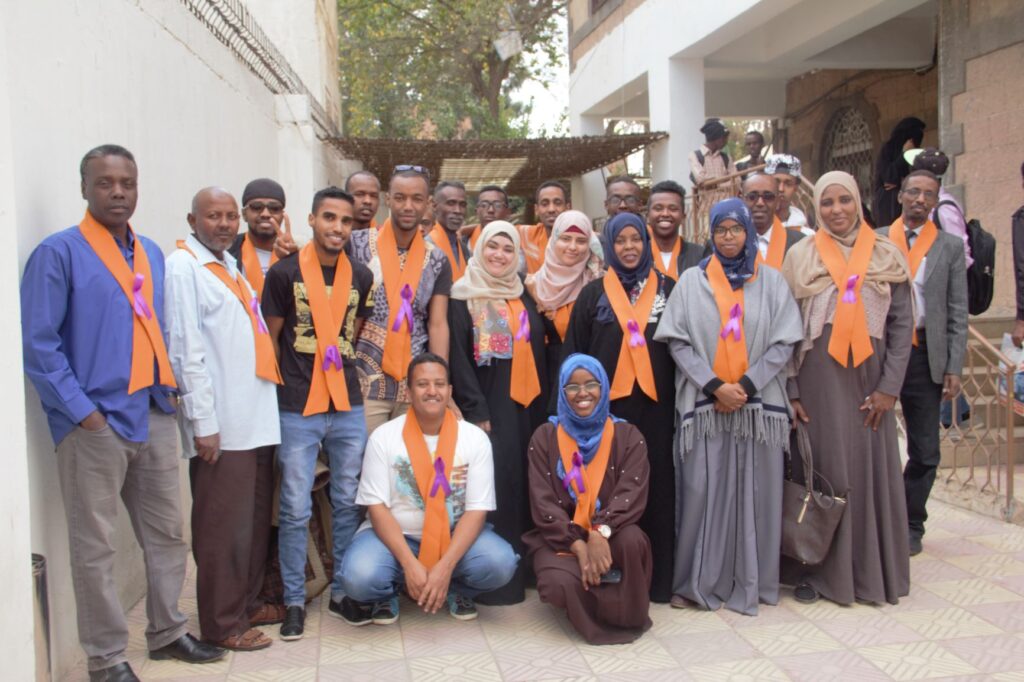
The Community-Based Education Center in Yemen provides young people with a place to gather and learn. (Photo taken pre-COVID-19)
In situations of displacement, new living conditions, a variety of diverse backgrounds, and lack of privacy can create increased tensions. Earlier this year, Blumont’s team in northeast Syria conducted the “Neighbor for Neighbor” Initiative, where men women, and children from different camp blocks gathered to discuss their concerns and take part in various team-building exercises.
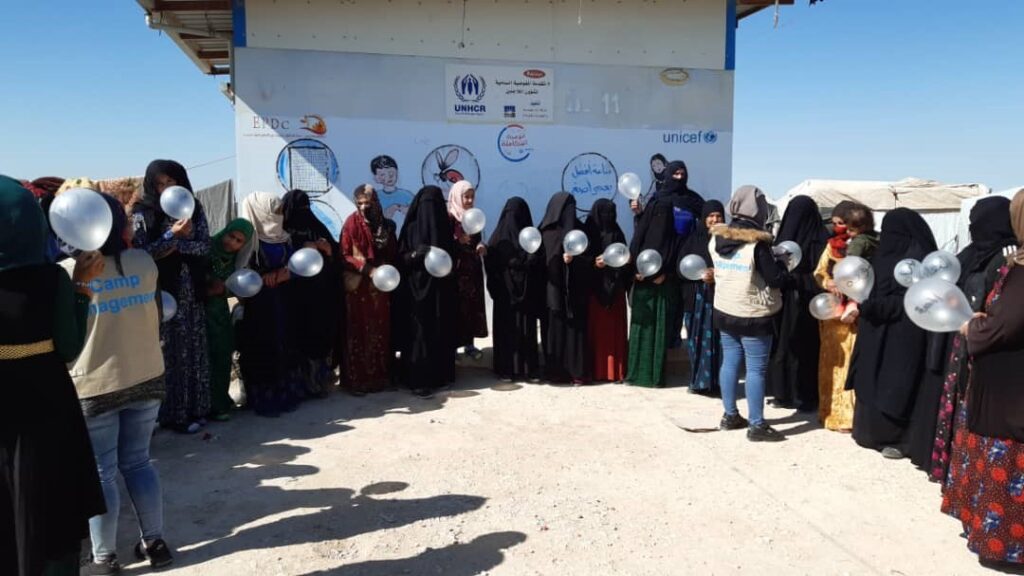
The Neighbor for Neighbor initiative in Syria established the foundation for a true community. (Photo taken pre-COVID-19)
The goal of the initiative was to cultivate a shared responsibility in creating a sense of community. During more than 50 sessions, participants identified different ways to support one another, such as making sure trash doesn’t end up around neighboring tents.
By the end of the campaign, new friendships were formed, especially between children. Participants began visiting their neighbors’ tents and would often share a meal together. Bonds formed during this initiative became a source of comfort to residents during challenging times as neighbors stepped in to support one another, truly engaging their community.



